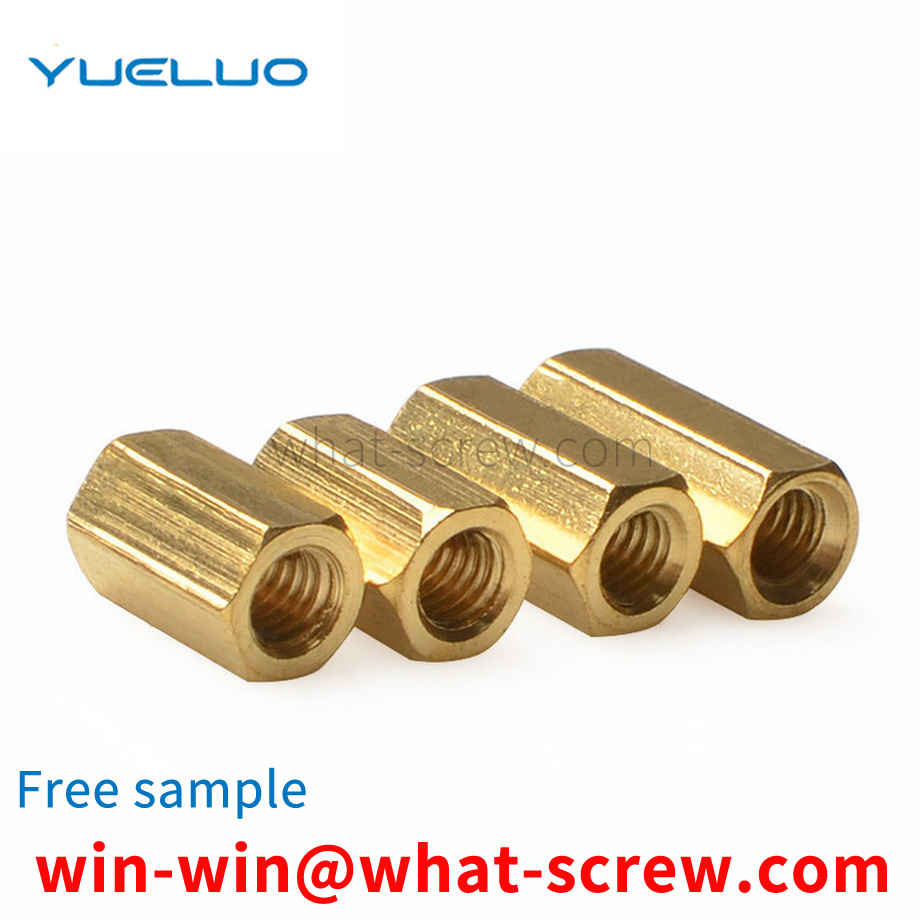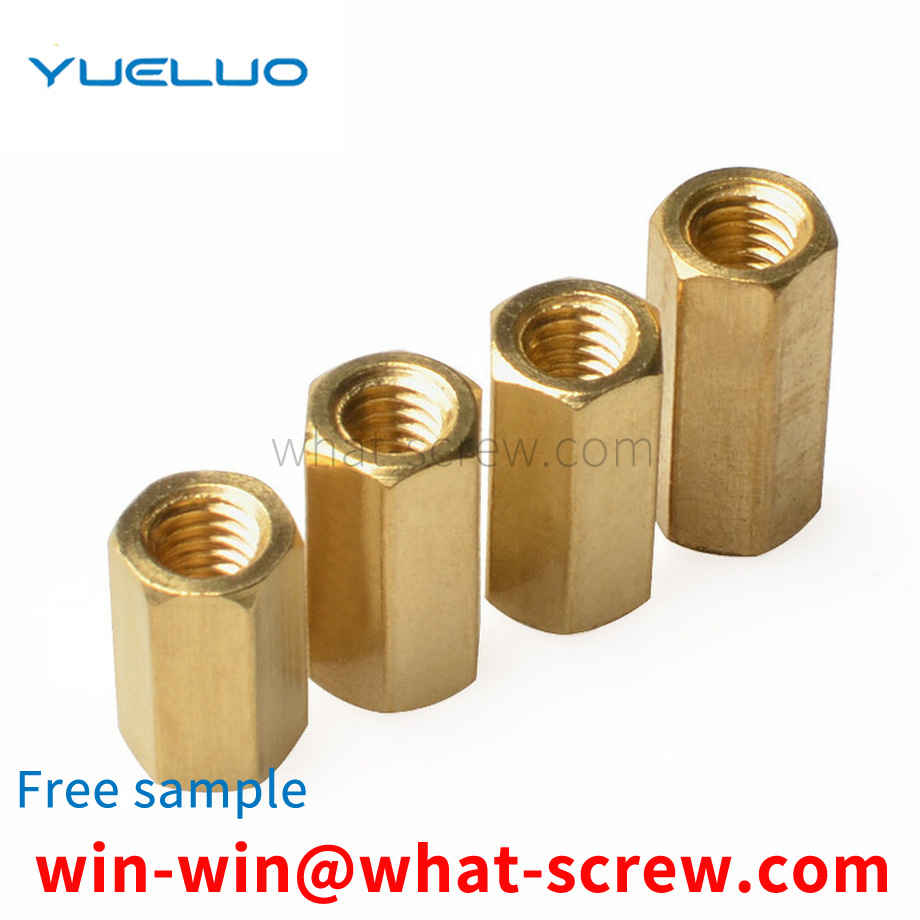In another embodiment of Guangdong Yueluo Hardware Industrial Co., Ltd., the conveying device 3 includes a motor 31 and a circular rotating disk 34, the motor 31 drives the circular rotating disk 34 to rotate, and the circular rotating disk 34 is evenly provided with screws in the circumferential direction. The matching screw accommodating hole 35, the screw enters the screw accommodating hole 35, the motor 31 drives the circular rotating plate 34 to rotate, so that the screw is first slotted by the cutting wheel 42, and then polished by the fixing wheel 48, and the screw is in the screw accommodating hole 35. It is fixed, which is more secure and reliable during the slotting process. Preferably, the circular rotating disk 34 includes a circular rotating disk 32 and a sector-shaped fixed disk 33. The circular rotating disk 32 is evenly provided with screw receiving recesses matching the screws in the circumferential direction, and the recesses and the sector-shaped fixed disk 33 are formed with the screws The matching screw receiving holes face the cutting wheel 42 and the fixing wheel 51 .
In the prior art, the earliest rivets were small pegs made of wood or bone, and the earliest metal deformations were probably the ancestors of the rivets we know today. Without a doubt, they are the oldest known method of metal joining, dating back as far as the earliest use of malleable metals, for example: the Bronze Age Egyptians used rivets to attach six wooden sectors to the outer lines of a slotted wheel Riveted and fastened together. After the Greeks successfully cast large statues in bronze, they then used rivets to rive the parts together. With the progress of the times, there are more and more types of rivets, but traditional rivets have connection strength. Insufficient problem, so a new rivet is needed to solve the above problem.
Hex cap screw and Hex bolt Hex bolt As the name suggests, it is a male threaded fastener with a hexagonal head, designed to be turned with a wrench. According to the ASME B18.2.1 standard, the head height and shank length tolerance of the hexagon head screw (Hex cap screw) is smaller than that of the general large hexagon bolt (Hex bolt), so ASME B18.2.1 hexagon screw is suitable for installation in all hexagon bolts that can be used. places, also including places where the large hex bolts are too large to be used. The screw head of the hexagon socket screw is round on the outside, and the middle is a concave hexagon, and the hexagon screw is the kind of common hexagonal screw head. The hexagon socket head screwdriver looks like a '7'. Cut two sections of a hexagonal steel bar and bend it at 90 degrees to form a hexagon socket head screw wrench, which is sold in hardware tool stores. Hexagon socket screwdrivers are not so-called mobile phone special screwdrivers. Mobile phone special screwdrivers can be bought at the booths that sell repair tools in the electronics market. Hexagon socket head cap screws are often used in machinery, mainly because they are easy to fasten, disassemble, and not easy to slip. The Allen wrench is generally a 90° bend. One end of the bend is long and one side is short. When using the short side to drive screws, holding the long side can save a lot of force and tighten the screws better. The long end has a round head (a hexagonal cylinder is similar to a sphere) and a flat head. The round head can be easily slanted and disassembled, and some parts that are inconvenient to lower the wrench can be installed. The manufacturing cost of the outer hexagon is much lower than that of the inner hexagon. Its advantages are that the screw head (the force position of the wrench) is thinner than the inner hexagon, and some places cannot be replaced by the inner hexagon. In addition, machines with low cost, low power strength and low precision requirements use much less hexagon socket screws than external hexagon screws. [1] Socket cap screw, also known as socket head screw or Allen bolt, is a screw with a hexagonal inner hole on the head, with a hexagonal ruler (hex key, Allen wrench or Allen key) Tighten or loosen only after inserting into the inner hole. The most commonly used hexagon socket head screws are cylindrical head screws with a head diameter of about 1.5 times the main diameter of the thread (1960 series). Countersunk head cap screw. The countersunk hole design allows the screw head to be rotated without being exposed on the surface of the fixed object, so it is mostly used in places where the surface is small and it is inconvenient for traditional wrenches to use.
The nut specification table is to unify all kinds of nuts in detail, and use the table to subdivide some specifications of the nuts. There are many types of nuts, and there are nuts of different materials. Each type of nut has different specifications, and each type of screw also has its mechanical properties and functions. · Square nut grade C GB 39-88 · Hexagonal nut grade C GB /T41-2000 · Hexagonal thick nut GB 56-88 · Wing nut GB 62-88 · Ring nut GB 63-88 · Combined cap nut GB 802 -88 · Spherical Hex Nut GB 804-88 · Fastening Nut GB 805-88 Knurled High Nut GB 806-88 · Knurled Thin Nut GB 807-88 · Small Hexagonal Extra Flat Fine Thread Nut GB 808-88 · Embedded Round nut GB 809-88 · Small round nut GB 810-88 · Round nut GB 812-88 End hole round nut GB 815-88 · Side hole round nut GB 816-88 · Slotted round nut GB 817-88 · Type 1 non-metallic insert hexagonal lock nut GB /T 889.1-2000 · Type 1 non-metallic insert hexagonal lock nut with fine thread GB /T 889.2-2000 · Cap nut GB 923-88 · Type 1 hexagonal nut GB / T 6170-2000 · Type 1 Hexagonal Nuts with Fine Thread GB /T 6171-2000 · Hexagonal Thin Nuts GB /T 6172.1-2000 · Non-metallic Insert Hexagonal Locking Thin Nuts GB /T 6072.2-2000 · Hexagonal Thin Nuts with Fine Pitch GB /T 6173-2000 · Hexagonal thin nuts without chamfer GB /T 6174-2000 · Type 2 hexagon nuts GB /T 6175-2000 · Type 2 hexagon nuts with fine pitch GB /T 6176-2000 · Hexagon flange nuts GB / T 6177.1-2000 · Hexagon flange face nuts with fine pitch GB /T 6177.2-2000 · Type 1 hexagon slotted nut - Grade A and B GB 6178-86 · Type 1 hexagon slotted nut - Grade C GB 6179-86 · 2 Type Hexagonal Slotted Nuts-A and B Grades GB 6180-86 Hexagonal Slotted Thin Nuts-A and B Grades GB 6181-86 Type 2 Non-metallic Insert Hexagonal Lock Nuts GB/T 6182-2000 Non-metallic Inserts Hexagon flange face lock nuts for non-metal inserts GB /T 6183.1-2000 · Non-metallic insert hexagonal flange face lock nuts with fine thread GB /T 6183.2-2000 · Type 1 all-metal hexagonal lock nuts GB /T 6184-2000 · Type 2 all-metal hexagonal lock nut GB /T 6185.1-2000 · Type 2 all-metal hexagonal lock nut fine pitch GB /T 6185.2-2000 · Type 2 all-metal hexagonal lock nut Grade 9 GB /T 6186-2000 · Full Metal Hexagon Flange Face Lock Nuts GB /T 6187.1-2000 · All Metal Six Angle flange face locking nut fine pitch GB /T 6187.2-2000 · Type 1 hexagon slotted nut with fine pitch A and B grades GB 9457-88 · Type 2 hexagonal slotted nut with fine pitch A and B grade GB 9458-88 · Hexagonal Slotted Thin Nut Fine Thread Grade A and B GB 9459-88 · Welded Square Nut GB /T 13680-92 · Welded Hexagonal Nut GB /T 13681-92 · Flat Head Rivet Nut GB /T 17880.1-1999 · Countersunk Head Rivet Nut GB /T 17880.2-1999 · Small countersunk head rivet nuts GB /T 17880.3-1999 · 120° small countersunk head rivet nuts GB /T 17880.4-1999 · Flat head hexagonal rivet nuts GB /T 17880.5-1999 · Hexagonal nuts for precision machinery GB /T 18195-2000
Usually, the forming of the bolt head adopts cold heading plastic processing. Compared with the cutting process, the metal fiber (metal wire) is continuous along the shape of the product, and there is no cut in the middle, thus improving the strength of the product, especially the mechanical properties. The cold heading forming process includes cutting and forming, single-station single-click, double-click cold heading and multi-station automatic cold heading. An automatic cold heading machine performs multi-station processes such as stamping, heading forging, extrusion and diameter reduction in several forming dies. The processing characteristics of the original blank used by the single-station or multi-station automatic cold heading machine are determined by the size of the bar with a length of 5-6 meters or the wire rod with a weight of 1900-2000KG, that is, the characteristics of the processing technology. The point is that cold heading does not use pre-cut single blanks, but uses the automatic cold heading machine itself to cut and upset (if necessary) blanks from bars and wire rods. Before extruding the cavity, the blank must be shaped. A blank that meets the technological requirements can be obtained by shaping. Before upsetting, reducing and positive extrusion, the blank does not need to be shaped. After the blank is cut, it is sent to the upsetting and shaping station. This station can improve the quality of the blank, reduce the forming force of the next station by 15-17%, and prolong the life of the die, and the bolts can be made with multiple diameter reductions. The precision that can be achieved by cold heading is also related to the selection of the forming method and the procedure used. In addition, it also depends on the structural characteristics of the equipment used, the process characteristics and its state, the precision of the tool and die, the life and the degree of wear. For high-alloy steel used in cold heading forming and extrusion, the roughness of the working surface of the cemented carbide mold should not be greater than Ra=0.2um. When the roughness of the working surface of this type of mold reaches Ra=0.025-0.050um, it has the highest life.
We have many years of experience in the production and sales of screws, nuts, flat washers, etc. The main products are: flat cup screws, pressure riveting screws, standard stainless steel bolts, ring bolts and nuts and other products, we can provide you with fastening suitable for you piece solution.



















 Service Hotline
Service Hotline




